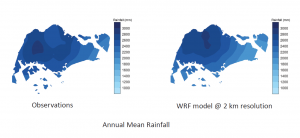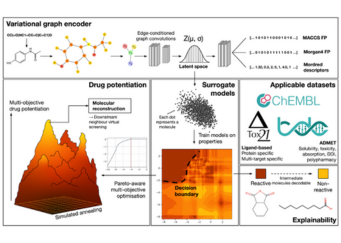Researchers from NUS Tropical Marine Science Institute are leveraging supercomputing to fine-tune Weather Research and Forecasting (WRF) Model and downscale hundreds of years of global climate projections for a national project with National Environmental Agency (NEA).
Over the years, researchers from the Climate and Weather cluster at the Tropical Marine Science Institute (TMSI) of National University of Singapore have revolutionized research in weather climate science. Leveraging high-performance computing resources (HPC) from NSCC Singapore, the research team has undertaken several research projects utilizing high-resolution numerical modelling methods to capture the characteristics of the tropical convective system.

By harnessing the capabilities of cutting-edge climate model simulations, Singapore is poised to transform weather predictions with reliable forecasting methodologies.
The Research
The geographical location of Singapore exposes the island to diverse large-scale atmospheric, oceanic, and coupled climate systems. Even with the state-of-the-art climate models, predicting the climate variability of Singapore Maritime Continent and its relation to large-scale atmospheric circulation patterns has proven challenging. However, through high-resolution numerical simulations, TMSI researchers have successfully forecasted daily weather at very high spatial resolution of 400 metres.
NSCC was instrumental in supporting these significant research endeavours. Weather and climate research demands extensive data storage and CPU core-hours for analysis and for delivering vast amounts of model simulations necessary for real-time weather predictions, model fine-tuning and dynamic downscaling purposes. Notably, the research team dynamically downscaled hundreds of years of global climate projections for a national project that was done in collaboration with National Environmental Agency.
The Technology
WRF model: Physical principles are represented as equations, with the current weather setting the initial and boundary conditions. These are used to solve the atmospheric variables such as wind, temperature, humidity, and precipitation.
Faster computing speed: This enables the WRF model to be simulated at extra fine temporal-spatial resolution to enhance forecast accuracy.
Multiple parallel computing jobs: This allows for decadal or century scale complex simulations.
Large storage space: More data can then be used and assimilated into the real-time weather system and for long term climate simulations.
The Impact
Numerous milestones have been accomplished over the years. Daily high-resolution weather forecasts are shared with national agencies, ensuring timely updates for the public. Furthermore, the team has is planning to roll out AI applications for weather and climate. The model outputs derived from the research have benefited scientific understanding, downstream impact assessments, and even brought about practical applications. Moving forward, the next phase involves broadening the scope of numerical modelling studies through projects commissioned by various government agencies and industries.

To find out more about how NSCC’s HPC resources can help you, please contact [email protected].
NSCC NewsBytes December 2023
Other Case Studies
Keeping drones safe in urban airspaces
Researchers from NTU tap on high performance computing to identify hazardous airspaces through urban weather simulations in order to facilitate effective route planning and...
Enhancing the safety of electric vehicles through HPC
Researchers from NUS tap on supercomputing to simulate the multi-physical processes of lithium-ion batteriesin order to develop cooling strategies for more advanced battery...
Advancing Drug Discovery Research using NSCC HPC resources
Researchers from Nanyang Technological University (NTU) are applying variational graph encoders as an effective generalist algorithm in computer-aided drug design (CADD)....


